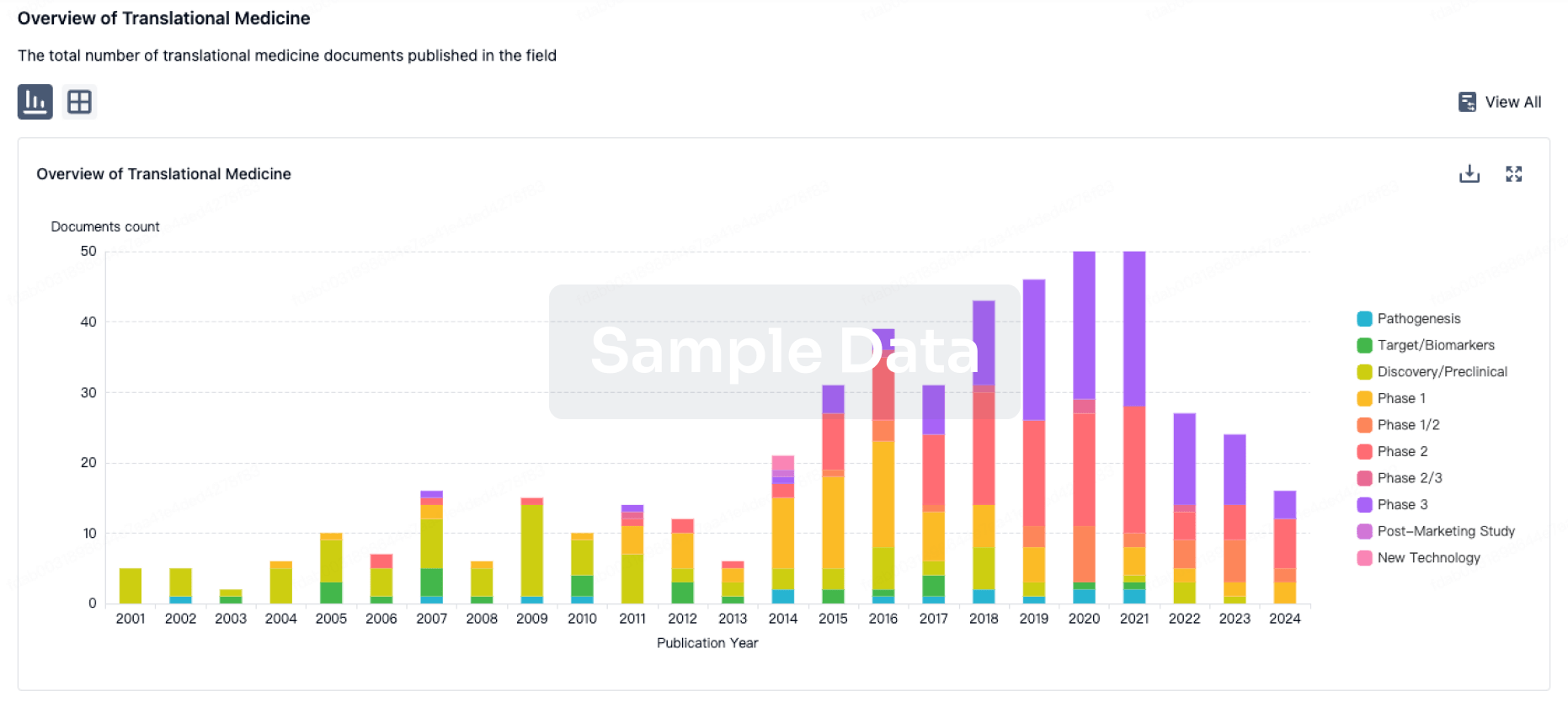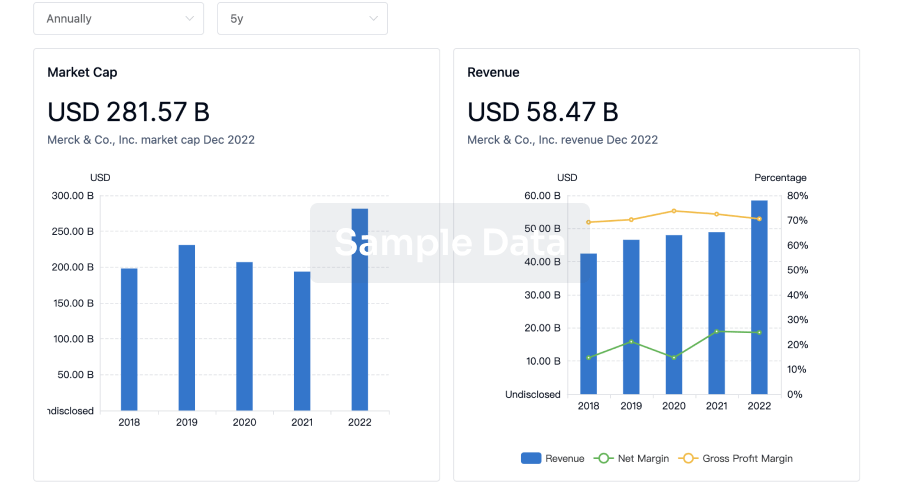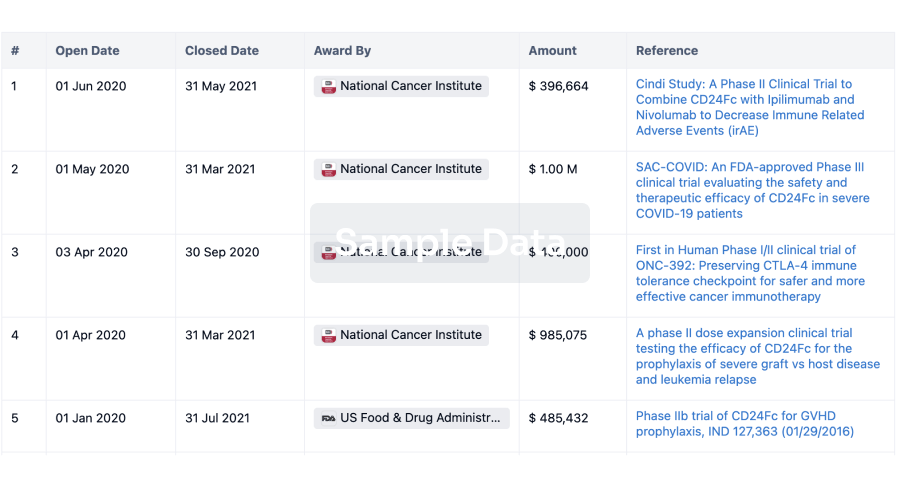Request Demo
Last update 08 May 2025

Zafrens, Inc.
Last update 08 May 2025
Overview
Related
100 Clinical Results associated with Zafrens, Inc.
Login to view more data
0 Patents (Medical) associated with Zafrens, Inc.
Login to view more data
2
Literatures (Medical) associated with Zafrens, Inc.21 Apr 2025·Cancer Research
Abstract 6648: Novel integrated stress response (ISR) kinase inhibitors have activity in multiple cancer cells
Author: Hedrick, Nathan G. ; Nai-Jung Hung, Ivy ; Laguerre, Aurelien ; Rozanov, Dmitri ; Goel, Vikas K. ; Hansen, Mark R. ; Smrcina, Martin ; Porter, Devin K.
21 Apr 2025·Cancer Research
Abstract 456: An ultrahigh throughput phenotypic screening platform to discover novel inhibitors of methyl transferases
Author: Hedrick, Nathan G. ; Smrcina, Martin ; Sm-Soon, Nicholas ; Glinkerman, Chris M. ; Ndungu, Maina ; Van Meter, Logan ; Chandran RaviChandran, Gopi ; Porter, Devin K. ; Zhang, Yi ; Brown, Steven ; Miller, Michael ; Nojadera, Allan ; Dmitri rozanov ; Nai-Jung Hung, Ivy ; Huynh, Cindy ; Lauerre, Aurelien ; Hansen, Mark R. ; Goel, Vikas K. ; Imler, Elliot ; Cole, Alexandra
1
News (Medical) associated with Zafrens, Inc.11 Dec 2023
SAN DIEGO--(
BUSINESS WIRE
)--
Zafrens
, a multi-modality drug discovery company, today announced the close of $23 million in financing led by Prime Movers Lab with participation from BlueYard Capital, KOFA Healthcare, Global Brains, FoundersX Ventures, Alix Ventures, Possible Ventures, Iaso Ventures, Hawktail, and other investors. The financing will be used to optimize breakthrough applications of the company’s Z-Screen
™
platform and advance an internal pipeline.
The Z-Screen
™
is a step-change in throughput and resolution of experiments, expanding the conventional 96-well format to 50,000 - 200,000 wells with imaging and single-cell multi-omic capabilities integrated in every well. Complex cellular co-culture interactions can now be resolved at the molecular and functional levels simultaneously. Large CRISPR, CAR-T, mRNA libraries, or endogenous molecular heterogeneity, can be mapped to their individual manifestations as cell behavior, cell-cell interactions and secretions. When exposed to the very large chemical libraries that are part of Z-Screen, the simultaneous functional and molecular profiling reveals hits, structure-activity-relationships, and mechanisms of action at the same time – compressing multiple traditional drug-discovery stages in one step.
“The Z-Screen approach is a fundamental change in how experiments are done. Iterative drug discovery can now be replaced with exhaustive combinatorial profiling at extremely high resolution,” said Swamy Vijayan, CEO, Zafrens. “We have evolved our system in collaboration with industry partners to have the greatest therapeutic impact. We’ve been working with companies on optimizing CAR intracellular domains (CAR-ICD) libraries in single-cell killing and sequencing assays and ranking bi-specific antibody libraries in three-cell co-cultures that map antibody sequences to target-effector interactions, target activation and cytokine secretions,” said Vijayan. “The molecular and functional nature of our experiments illuminate interactions inside the cell and receptor-antigen interactions on the cell surface. We are pursuing these insights through an exciting internal pipeline of RNA-modulatory small-molecules and HLA-agnostic TCR libraries to common cancer mutations.”
“Prime Movers Lab backs ambitious founders building technologies with the potential to transform billions of lives,” said Justin Briggs, Biologist & Partner at Prime Movers Lab and Board Director at Zafrens. “The cohesive merging of engineering, chemistry, and biology breakthroughs at Zafrens democratizes therapeutics discovery by driving down costs of experimentation, massively parallelizes single cell analysis and reveals dense molecular insights to inform drug design, patient selection and clinical hypotheses. This is a completely transformative way to advance drug discovery and we’re excited to support this team.”
“We have been applying AI on very sparse datasets in biology and chemistry historically. The volume and resolution of data Zafrens generates is revolutionary in the machine learning possibilities it enables,” said Jason Whitmire, Managing Partner, BlueYard Capital and Board Director at Zafrens. “By measuring whole-cell transcriptomic, proteomic and imaging responses when exposed to massive libraries of perturbations and external interactions, Zafrens creates datasets that are orders of magnitude more complex than single-protein binding measurements, revealing causal underpinnings of subtle cell behavior. We have been impressed by the agile and thoughtful application of the technology by the Zafrens team and are looking forward to the tremendous impact high-resolution biology can have in healthcare.”
Having simplified and industrialized Z-Screens, Zafrens is looking to engage with partners in its internal areas of expertise – rapid, HLA-independent, highly-selective TCR discovery, and RNA regulatory small molecules across 3’ UTR regulation, splicing and epigenetic reprogramming. The extremely high resolution and throughput allow challenging problems in biology and chemistry to be examined through a new lens. Having already demonstrated transformative capabilities in CAR-T optimization and bi-specifics discovery, the company is seeking further partnerships in these areas or additional areas where combinatorial libraries of small-molecules, genetic perturbations and/or cell-cell interactions could produce breakthroughs.
About Zafrens
Zafrens is pioneering an ultra-high throughput platform to isolate, culture, image, and sequence millions of cells per day. The proprietary platform allows for full characterization of diverse cell populations, as well as directly correlating molecular profiles (DNA, RNA, protein) to cell phenotype and function. The company’s mission is to unlock the full story of every cell to accelerate drug discovery. Zafrens is based in San Diego, CA. For more information, visit
www.zafrens.com
.
100 Deals associated with Zafrens, Inc.
Login to view more data
100 Translational Medicine associated with Zafrens, Inc.
Login to view more data
Corporation Tree
Boost your research with our corporation tree data.
login
or

Pipeline
Pipeline Snapshot as of 07 Aug 2025
No data posted
Login to keep update
Deal
Boost your decision using our deal data.
login
or

Translational Medicine
Boost your research with our translational medicine data.
login
or

Profit
Explore the financial positions of over 360K organizations with Synapse.
login
or

Grant & Funding(NIH)
Access more than 2 million grant and funding information to elevate your research journey.
login
or

Investment
Gain insights on the latest company investments from start-ups to established corporations.
login
or

Financing
Unearth financing trends to validate and advance investment opportunities.
login
or

AI Agents Built for Biopharma Breakthroughs
Accelerate discovery. Empower decisions. Transform outcomes.
Get started for free today!
Accelerate Strategic R&D decision making with Synapse, PatSnap’s AI-powered Connected Innovation Intelligence Platform Built for Life Sciences Professionals.
Start your data trial now!
Synapse data is also accessible to external entities via APIs or data packages. Empower better decisions with the latest in pharmaceutical intelligence.
Bio
Bio Sequences Search & Analysis
Sign up for free
Chemical
Chemical Structures Search & Analysis
Sign up for free